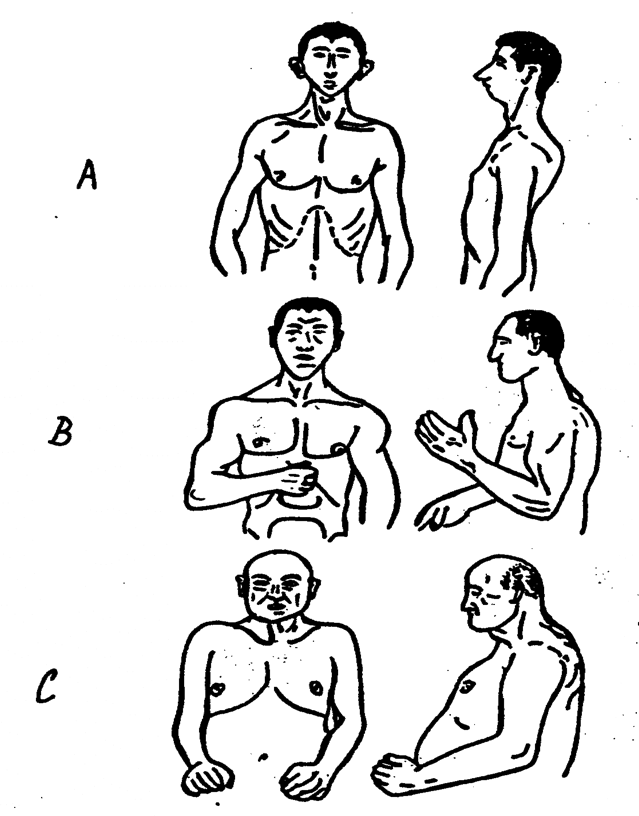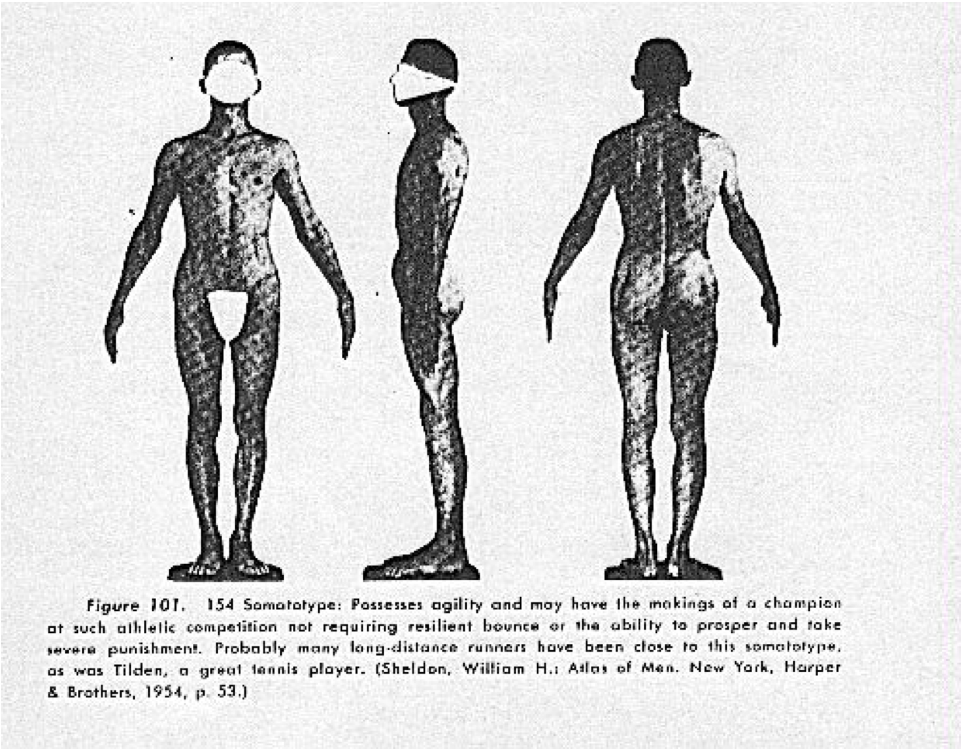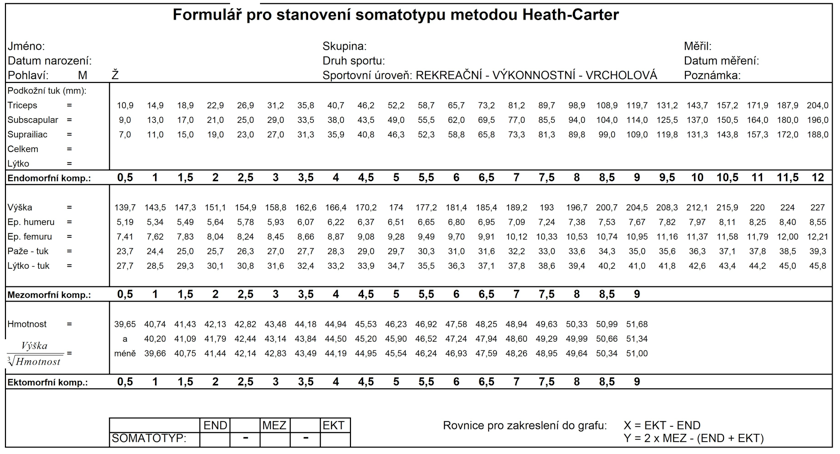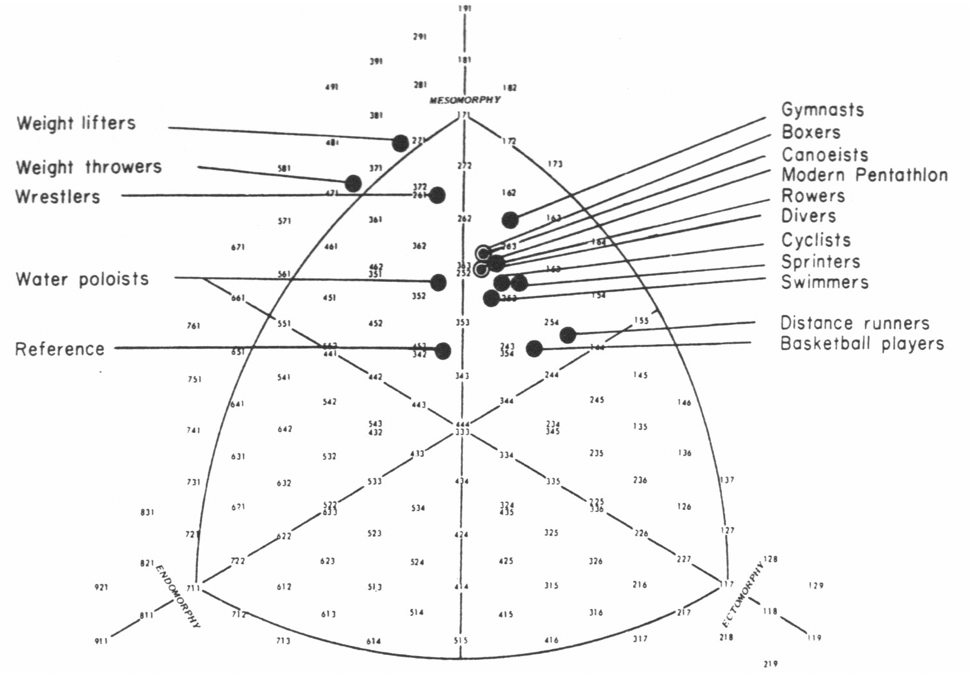
Antique Typological School
Its main representative was HIPPOCRATES who is considered to be one of the founders of medicine. He defined two basic types:
- habitus phthisicus (slim human) vulnerable from tuberculosis phthisis)
- habitus apoplecticus (chubby human) vulnerable from stroke
French Typological School
It was founded by J. N. HALLÉ, among his followers were L. ROSTAN, C. SIGAUD and L. MAC AULIFF. In 1877, Hallé published a paper which introduces four basic types: abdominal (stomach), muscular, thoracic (chest) and cranial (skull). All of these four types with different names were used by his followers.
Fig. 16 Respiratory, Digestive, Muscular and Cerebral Types according to Sigaud (Riegrová, Ulbrichová, 1998, 50)

Italian Typological School
Italian school was founded by A. DE GIOVANI, who was an anthropologist, and his student S. VIOLA. In 1909, Viola formulated a method based on the proportion of chest circumference and the length of limbs. In 1932, he published a method which was based on a presupposition that each human deviates from the ideal type – medium standard. Such deviations can be charted in Gauss curve.
German Typological School
Its main representative was E. KRETCHMER who published a book called Körperbau und Charakter in 1921. In this book, he distinguishes three basic types: A – asthenic type, B – athletic type, C – pyknic type. At the same time, he suggested a relationship between somatic type and mental condition: pyknic type often suffers from manic depressive psychosis but rarely suffers from schizophrenia, on the other hand, asthenic and athletic types suffer very often from schizophrenia but rarely suffer from manic depressive psychosis.
Fig. 17 A Asthenic Type, B Athletic Type, C Pyknic Type According to Kretchmer (Riegrová, Ulbrichová, 1998, 51)

American Typological School (somatotype)
Its founder was WILIAM SHELDON who published together with his collaborators a book called Varieties of human physique in 1940. This book introduces the term somatotype. Sheldon defines thre basic types for which all possible degrees can be categorized according to a scale ranging from 1 to 7. These components were called after germ layers in embryonic development (3 germ layers – endoderm, mesoderm, ectoderm). His typology was determined on the basis of standard photography and distribution of somatotypes based on height-weight index. The results were recorded into somatograph which is in the shape of spherical triangle. Among his followers was PARNELL (1954) who introduced anthropometry instead of photoscopic method and started to set values of individual components on the basis of a simplified table. Current form of this table was created by HEATH and CARTER (1963,1967). Later, in 1965, Parnell published his revised method which meant replacing the three components by only two called FAT and LEAN which were determined on the basis of body height, body weight and three skinfolds.
Fig. 18 Example of somatotype (Sheldon, 1954, 53)

Fig. 19 Somatotype telling form (Riegrová, Ulbrichová, 1998, 57)

Fig. 20 Division of somatograph into individual areas according to Chytráčková (Kouba, 1995, 68)
